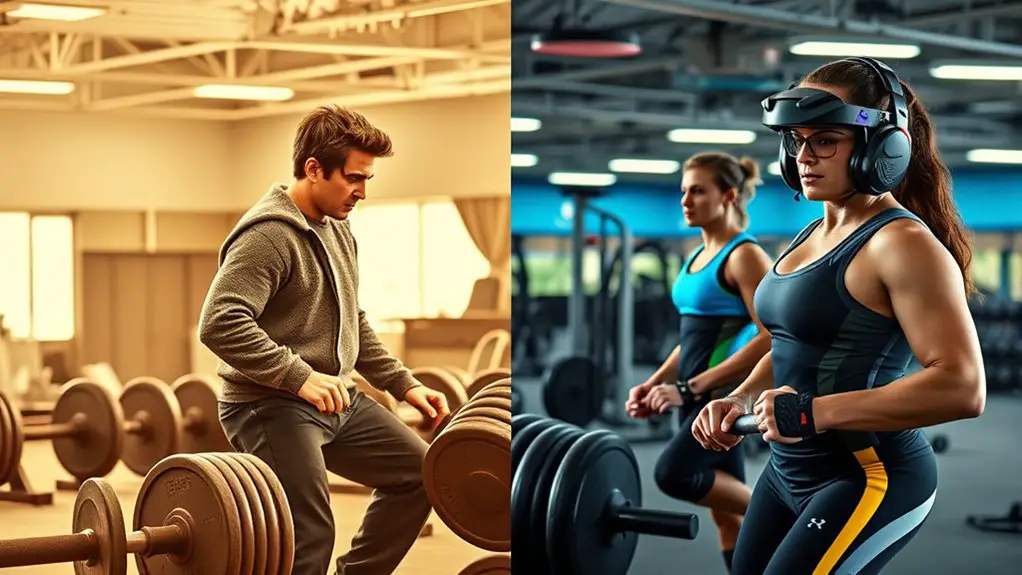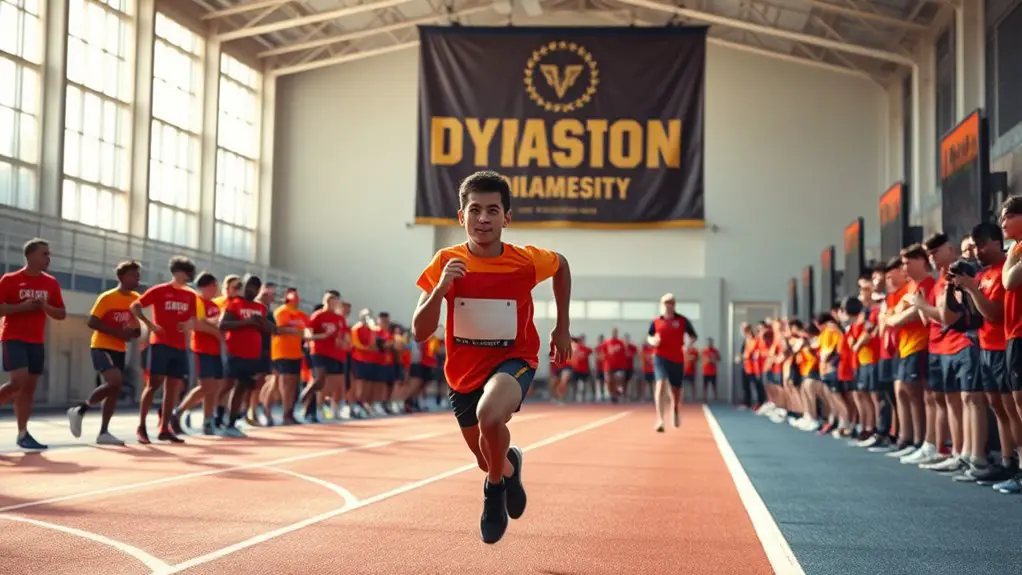Athletic training has come a long way over the decades. It started with ancient methods focusing on health and injury prevention, evolving through the transformative 1970s and 1980s with advances in sports science, nutrition, and psychology. Today, injury prevention and rehabilitation techniques are essential for athlete longevity. Technology plays a major role, from wearables to AI analytics, enhancing performance and recovery. Interested in how these changes might shape the future of athlete care? There's more to explore!
The Early Days: Foundations of Athletic Training
Although athletic training has evolved considerably over the years, its foundations were laid centuries ago when the importance of physical health and injury prevention began to gain recognition. Back then, athletes understood that staying fit and resilient was essential for their freedom to perform. They embraced various natural remedies and simple practices to heal injuries and enhance their performance. Whether it was through massage, herbal treatments, or basic nutrition, these early practitioners laid the groundwork for modern training. You can appreciate how they valued not just physical prowess but also the well-being that comes with it. This early recognition of the body's needs allows you to pursue your passions today, fostering a culture of health and freedom that empowers every athlete on their journey.
Advancements in Sports Science: The 1970s and 1980s
As the 1970s and 1980s rolled in, the world of sports science began to transform dramatically, paving the way for modern athletic training. You'd see breakthroughs that changed how athletes approached their performance and recovery. Key advancements included:
- Biomechanics – Understanding movement mechanics helped optimize training techniques.
- Nutrition – Enhanced knowledge about diet fueled athletes' performance like never before.
- Psychology – Mental health and motivation strategies became integral to training regimens.
- Technology – The use of equipment like heart rate monitors and video analysis improved training efficiency.
These innovations empowered you, the athlete, to push boundaries and release your full potential. The era marked a shift toward a more scientific approach in sports, enhancing both performance and enjoyment.
The Rise of Injury Prevention and Rehabilitation Techniques
Building on the advancements in sports science, the focus began to shift towards injury prevention and rehabilitation techniques that would protect athletes and enhance their longevity in their respective sports. You're likely realizing how vital it is to keep your body in peak condition. Stretching routines, strength training, and proper nutrition became essential tools in your arsenal. Not only do these practices minimize injury risks, but they also empower you to push your limits safely. Furthermore, rehabilitation techniques have evolved, emphasizing a holistic approach to recovery, allowing you to bounce back stronger. By prioritizing your well-being, you're not just ensuring short-term success; you're embracing a sustainable athletic journey that celebrates your freedom to excel and enjoy the sport you love.
The Impact of Technology on Athletic Training Practices
With the rapid advancement of technology, athletic training practices have transformed in ways that were once unimaginable. You're now able to harness these innovations to enhance performance and promote recovery. Here are some impactful changes:
The evolution of technology has revolutionized athletic training, empowering athletes to enhance performance and optimize recovery like never before.
- Wearable technology – Track your biometrics in real-time, giving you insights into your body's performance.
- Video analysis – Evaluate your techniques, identifying areas for improvement with precision.
- Virtual reality training – Simulate game scenarios, helping you hone skills in a controlled environment.
- Telehealth services – Access expert advice and rehabilitation from anywhere, breaking geographical barriers.
Embracing these tools not only boosts your training but also empowers you to take charge of your athletic journey. Freedom in training is now more accessible than ever!
Looking Ahead: The Future of Athletic Training and Athlete Care
The innovations brought by technology have set the stage for an exciting future in athletic training and athlete care. As you embrace cutting-edge tools like wearable tech and AI-driven analytics, you'll gain deeper insights into performance and recovery. Imagine personalized training programs adapted in real-time, ensuring you're always at your best. Telehealth services will give you the freedom to consult experts anytime, anywhere, breaking geographical barriers. Additionally, advancements in injury prevention and rehabilitation techniques will empower you to maintain your peak condition longer. The future of athlete care isn't just about treatments; it's about enhancing your autonomy, allowing you to take charge of your health and performance. Get ready to explore a world where your potential knows no limits.
Frequently Asked Questions
What Qualifications Do Athletic Trainers Typically Have Today?
Today, athletic trainers typically hold a bachelor's or master's degree in athletic training, complete clinical hours, and earn certification from the Board of Certification. They also need state licensure to practice professionally in their region.
How Do Athletic Trainers Collaborate With Coaches and Athletes?
Athletic trainers collaborate closely with coaches and athletes, sharing insights on injury prevention and recovery. You'll find they communicate regularly, ensuring everyone's on the same page about training regimens and maintaining ideal performance levels.
What Roles Do Athletic Trainers Play in Professional Sports?
Imagine a guardian angel in the arena, guiding athletes. You'll see athletic trainers as healers, strategists, and educators, ensuring players' health and performance soar, while fostering resilience and harmony within the dynamic world of professional sports.
How Has Public Perception of Athletic Trainers Changed Over the Years?
Public perception of athletic trainers has shifted considerably; you'll notice more recognition of their expertise and crucial role in athlete health. People now see them as essential professionals, not just sideline helpers. It's a positive change!
What Are Common Misconceptions About the Role of Athletic Trainers?
You might think athletic trainers just help with injuries, but they actually prevent, diagnose, and treat a wide range of conditions. It's not just about tape and ice; they're crucial for overall athlete health and performance.




